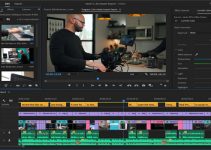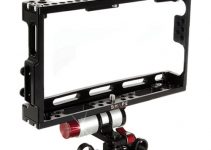The great appeal of mirrorless and DSLR cameras has always been the beautiful images these cameras could produce when compared to the camcorders we had before that. But how is it so? Well, the answer is quite simple: bigger is better! Puns aside, all previous (not cine) cameras had quite small sensors, the usual being 1/3″, and couldn’t produce at all the soft and creamy bokeh that cinema with its glorious S35 film negative could create.
But with that soft and beautiful bokeh (and increased resolutions too!) came a new problem – out-of-focus images. And we can’t afford that, right? These 5 hacks may help you to nail the perfect focus, courtesy of Cinecom.net
We won’t dwell on the reasons that allow bigger sensors to have less depth of field (or DOF for short), it’s enough to know for the sake of focus pulling, that it’s a limitation due to the physics of light. The result, however, is what is important to us as having a crisp and clear image is the priority for all filmmakers.
But if you are dipping your toes in the exciting world of filmmaking, chances are you are having trouble keeping your image like that, so there are some key points you should keep in mind. But enough chit-chat, let’s get down to the tips!
#1 – Keep your distance!
Well, it’s not so much of a tip per-se, as it should be considered the basics of focus pulling, still not everyone has had experience and knows it all, right? The lesson is simple. Once you get your subject in focus you should not vary the distance between yourself and the talent.
If you move you slowly bringing him outside of your in-focus area. The width of that focused area is what you usually call depth of field. Knowing that you’ll notice that you’ll start thinking of your shoots differently, creating scenes and frames where there is less movement of the talent towards or away from the camera.
#2 – Know your Autofocus!
It may seem like a joke, but the autofocus can be a real lifesaver if used well. In fact, what really is troublesome with autofocus systems is the continuous AF, since the camera keeps looking for the right focus point and can ruin an otherwise perfect shot. So what should we set our cameras at? Well, the best setting is probably “push to focus“.
That way you have your camera pulling focus only when you want it to, and once nailed it, it keeps it right there where you want it. Another viable option is the spot autofocus: as you may have guessed already, this option will keep the camera focusing always in the same spot. This can double as a creative tool since you can actually pull focus if you move the camera smoothly. Granted, it’ll work better on a high-end camera, but still, a nice trick to keep in mind.
#3 – Mark your focus points!
There’s a trick most focus pullers all over the world use, and that’s marking the focus points. They usually use gaffer tape to mark on the follow focus disks, during the rehearsals, the spots where the talents need to be in focus. You can do something similar on the lens itself if you don’t have a follow focus. Beware that not all lenses focus in the same direction, and while learning, it may be useful to mark the right direction on the lens.
You could just use a piece of tape with an arrow, nothing fancy. What if this tip is not working for you? Odds are you’re shooting with a lens made for still photography but with modern autofocus systems. Some of those lenses do not provide a proportional and repeatable effect as you turn the ring in one direction or the other. But, as said, it’s a risk you’ll have with a very few lenses out there.
#4 – Use the right settings!
There are a few basic concepts you must learn about optics. Again, we’re just scratching the surface and over-simplifying thing for the sake of clarity. That said, you’ll notice right away that the more you close your iris, increasing the f-stop number, the more you’ll increase the width of your area in focus.
The so-called depth of field grows proportionally to the aperture of your lens. Add to that that wider lenses have a wider DOF and that objects far from the lens have more DOF, and you have three parameters you can use to increase your chances of having a shot clearly in focus. If you feel intrigued you can search for some books about optics and cinematography, but be warned, that’s a rabbit hole that goes down deep, and very few came back from there!
#5 – Shoot out of focus!
When you are in a difficult situation, if you are not sure to nail the focus perfectly, it could be better to embrace the out-of-focus look. It’s not so crazy as it may seem. Sometimes it’s better to stick with an image that is clearly and on purpose out of focus, instead of having a picture where you have that slight defocus that screams to the audience: “This was a mistake of the focus puller!”.
If your subject turns and walks away from the camera, don’t even try to pull focus. Let him vanish in the soft and creamy bokeh of your primes, maybe even pulling focus in the opposite direction! That way you’ll get a much more appealing picture.
So there you go, a few suggestions to those who are approaching the filmmaking world and may have some hiccups holding their images clear and focused. We hope you’ll find these tips useful!
[source: Cinecom.net]
Disclaimer: As an Amazon Associate partner and participant in B&H and Adorama Affiliate programmes, we earn a small comission from each purchase made through the affiliate links listed above at no additional cost to you.




